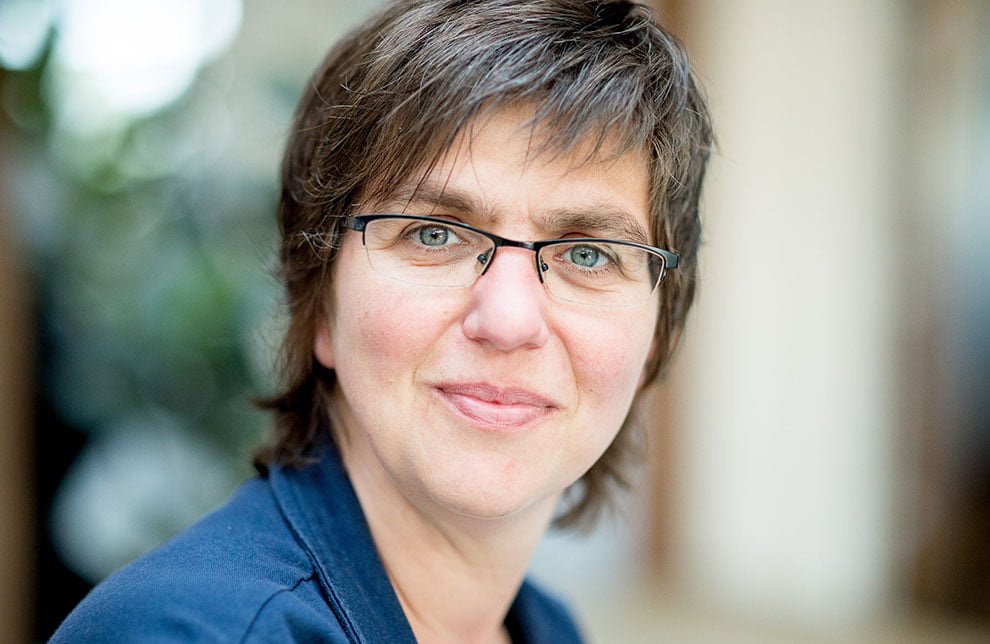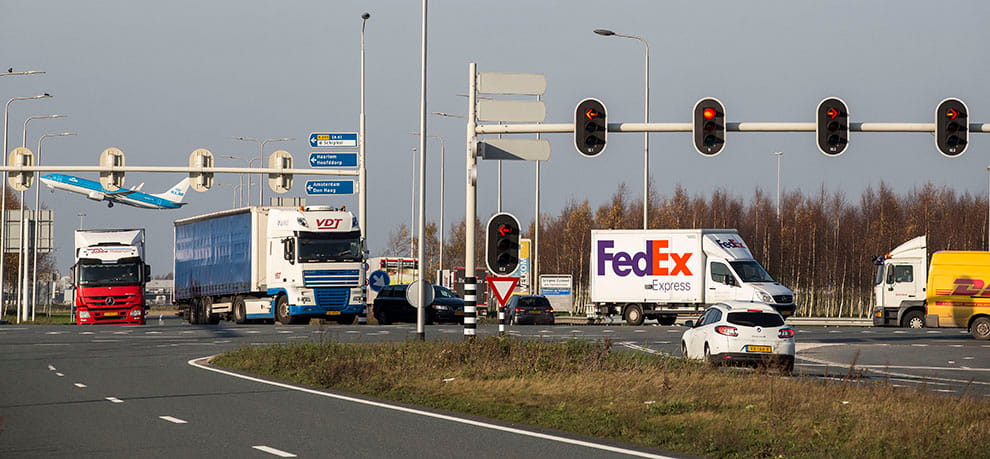CTC Brings Green Lights and Greener Transport
The Connected Transport Corridor (CTC) Amsterdam Westkant is underway. It makes transport on the road to and from Schiphol more efficient by allowing logistics data to be shared. And for transporters throughout the Netherlands, it means fewer delays and faster connections. But what is the CTC Amsterdam Westkant, and how will it make transport cleaner, safer and more sustainable? We spoke to Bart Pouwels, Head of Cargo at Schiphol, and Janneke Nijsing, Corridor Manager Amsterdam Westkant, to find out.


What is the CTC, and what will it do?
Janneke: It’s important to emphasise that CTC is not another pilot. We’ve had too many of those. CTC is a national initiative that utilises some of the more than 400 smart traffic lights in the Netherlands, plus live traffic and road condition information, to notify truck drivers of any conditions that may hinder their journey, and give them priority at traffic lights when possible. The aim is to ensure that drivers get to their destination as swiftly and sustainably as possible.
Bart: I think the word ‘Corridor’ says it all. We are literally creating open paths from drivers’ starting point to their destination, and informing them about obstacles that may get in the way. By giving them priority at green lights, we reduce starting and stopping, which not only supports swift movement, but also reduces CO2 emissions.
How does it work?
Janneke: In this first launch, we’re using a mobile app to alert drivers to traffic jams, accidents, construction and other hindrances on the road. The app also communicates with the Smart Traffic Lights to give drivers priority green lights when possible.
Bart: As the project grows and expands, we’ll work with the many IT parties that supply on-board computers, to eventually make the technology available there instead.

Source: Bas Beentjes
How important is data to CTC’s success?
Janneke: It’s absolutely crucial. Of course, we need data to provide up-to-the-minute information about traffic and road conditions, but we also need data from the trucks themselves, so that we can ensure that they're on the most streamlined route possible, and offer them the most helpful travel advice.
Bart: Trucking and transport companies are often hesitant to provide data to those outside their own company. But if they’re willing to share some data – about as much data as is currently on a typical airway bill – we can reduce their wait times, prepare effectively for their arrival, and optimise their transports, which can save time and costs and increase safety for all drivers. It could even make it possible for drivers to reserve slots at Schiphol, for priority processing of their cargo.
What are the next steps?
Bart: The CTC is up and running, and it’s already working. The next step is to add more transport companies to the system, and help them take advantage of all of CTC’s benefits. Drivers tell us that CTC reduces stress and frustration during transport, because major delays can usually be avoided. We’re also looking into safer, smarter solutions for trucks that have to wait to be processed.
Janneke: The great thing about CTC is that it’s not just one solution, but many. So we’re investigating more ways to use data and connection to make transport safer, cleaner and more sustainable. We’ll be adding new features and partners, more Smart Traffic Lights. We’ll also look into expanding CTC’s reach in other regions and other domains, like new initiatives in Schiphol’s Smart Cargo Mainport Program (SCMP).
Why should trucking companies get involved sooner rather than later?
Janneke: Even though we’re still working out some of the kinks in the system, transport companies that join now can be part of shaping the system and developing solutions. This is the best way to ensure that the complete system meets their needs into the future.
Bart: Plus, the sooner our partners get on board, the sooner we can establish a safe, secure and robust system that truckers will be proud of. Input and data from actual drivers on the road can help us propel CTC forward and optimise all of its capabilities.
Who’s involved in making CTC happen?
Janneke: The Amsterdam Logistics Programme owns the initiative, but it was developed by a coalition of public and private partners that all have a vested interest in safer, cleaner, more sustainable travel. Think here about the Port of Amsterdam, FloraHolland/Greenport Aalsmeer, the province of North Holland, the Dutch Department of Waterways and Public Works (Rijkswaterstaat), Vervoerregio Amsterdam and the Ministry of Infrastructure.
Bart: Of course, Schiphol belongs in a collation like this. Improving transport for the millions of trucks that travel in our region every year not only benefits the Cargo community, but Schiphol’s long-term vision for smarter, cleaner Cargo operations as part of SCMP.
What’s your message to the Cargo community?
Bart: Get in touch. We’re eager to grow the number of trucks on the road that use this technology. Because every truck that has a smooth and safe transport journey is another truck that contributes to a better Cargo system for us all.
Janneke: Not to mention the benefits for the community at large. CTC addresses sustainability goals, traffic reduction goals, noise reduction goals, smart cargo goals, and more. If everyone is willing to contribute to the solutions, we can solve a host of problems that cities, communities and transport companies face.
Want to know more about the CTC Amsterdam Westkant programme, or how you can join? Contact Bart Pouwels or Janneke Nijsing today.